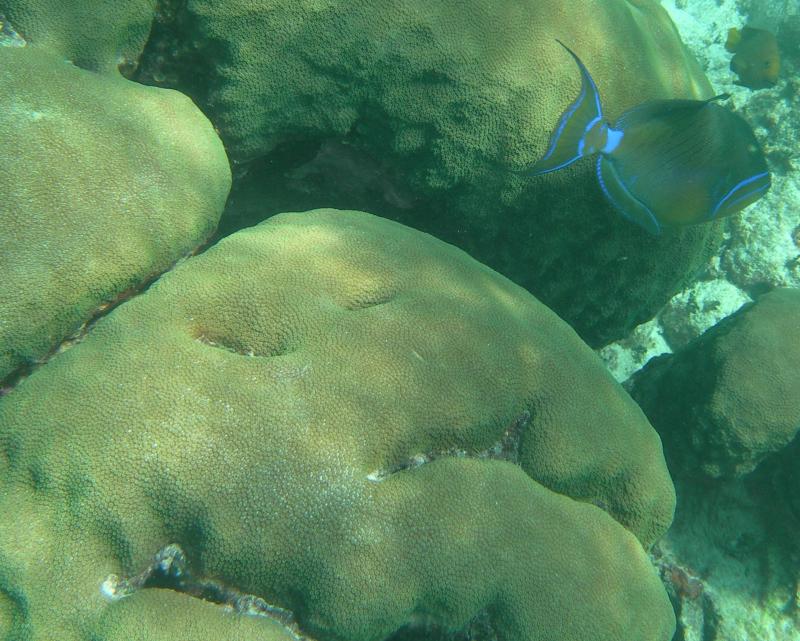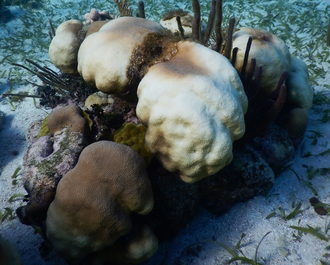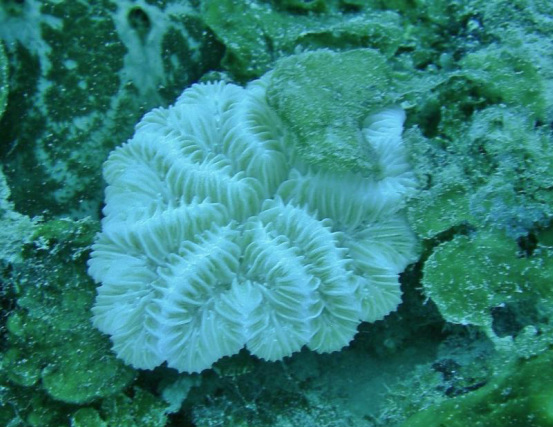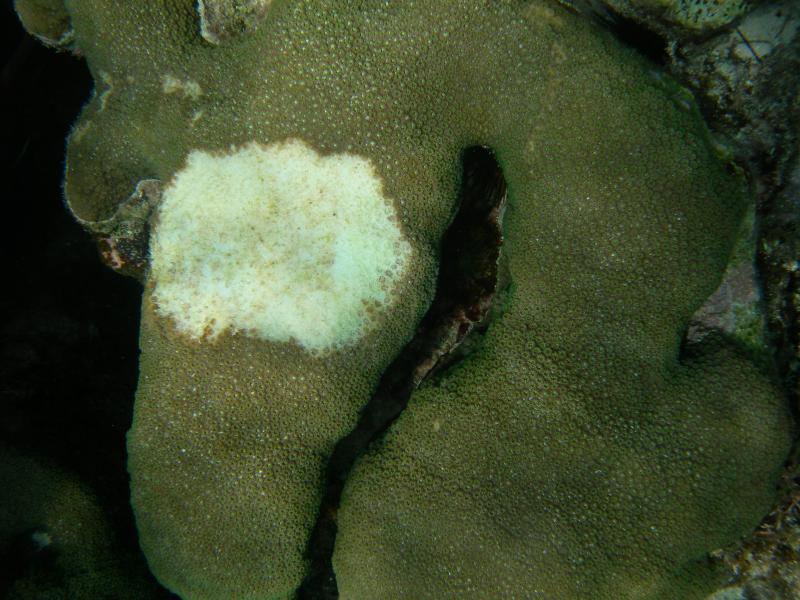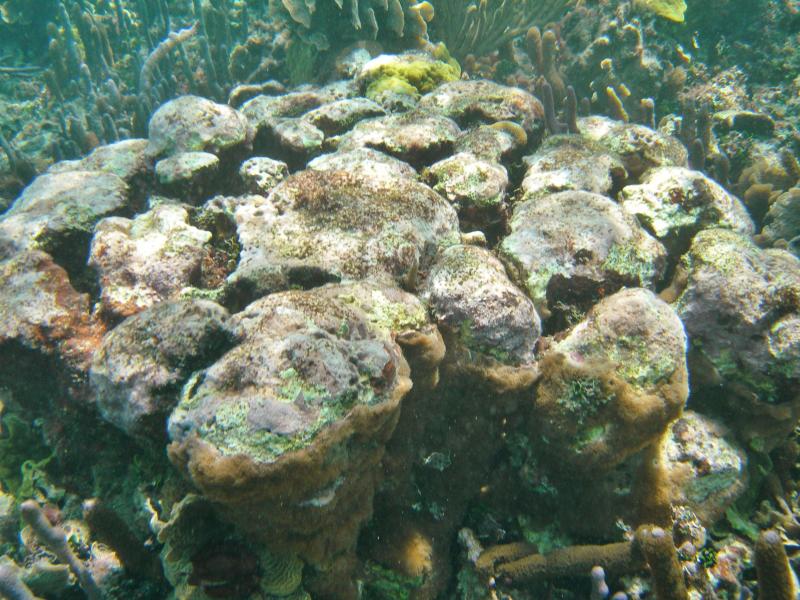When you become a Coral Watch Volunteer one of the things you will learn is to distinguish between healthy coral, diseased coral and bleaching coral. The key is to examine the coral color and note any deviations from the prominent shade on the entire colony.
Healthy CoralHealthy coral comes in shades of olive green, brown, tan and pale yellow. In a healthy coral colony no parts are affected by disease or bleaching. Healthy coral provides shelter for many other species of tropical animals that rely on the structure provided by corals for their homes, and others find food that shelters in the crevices of stony corals.
|
UNHEALTHY CORAL
palE, part bleached, whole bleachedWhen corals become stressed and begin to bleach the first sign is paling, then part bleached, and then whole bleached when more than 90% of the coral colony is affected. When corals begin to bleach and exhibit paling, the edge of the affected tissue blends from light to dark, in comparison to disease where the contrast between healthy and diseased tissue is seen as a distinct line.
|
coral disease
|
Dead CoralIf coral colonies remain bleached for an extended period of time and do not regain their symbiotic zooxanthellae, they will die. Stony coral that is no longer covered in coral tissue often becomes covered in algae giving it a grey or reddish tinge. Over time other reef organisms may begin growing on the dead coral, but once the coral tissue has died it will not return.
|
Become a Coral Watch Volunteer Today!
If you are ready to learn more about coral reefs and how to distinguish healthy, diseased, bleached or dead coral visit the Belize Coral Watch page and sign up today and become a Coral Watch Volunteer! We need Coral Watch Volunteers to send us reports from all over Belize. Please Contact Us with any questions!

